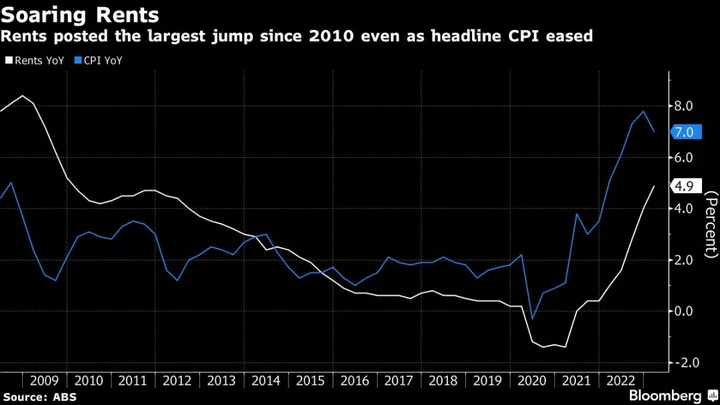Australia is encouraging investors to build urgently-needed rental properties by slashing levies as part of measures aimed at easing the country’s worsening housing crisis.
The government is seeking to boost the nation’s fledgling build-to-rent sector by offering tax breaks to local and overseas investors, according to federal budget proposals. The industry, which builds apartments that must be made available for rent, is booming in the US and UK but yet to make headway in Australia.
Tuesday’s budget tweaks will halve the tax that foreign investors pay on build-to-rent projects, bringing the rate into line with other commercial properties such as offices or retail. That could see an extra 150,000 new homes built over the next decade, according to The Property Council of Australia.
The incentives may go some way to easing the pressure on Australia’s housing crisis, but the challenges are rapidly mounting. Rents are surging at the fastest pace since 2010 due to low vacancy rates, rising immigration and a lack of supply. Approvals to build new homes fell by the most on record in January, while Tuesday’s budget forecast net overseas migration of more than a million people in the three years through 2025.
Meanwhile, house prices are on the rise again, with values jumping for a second straight month in April. Values had fallen back from sky-high levels reached during the pandemic, but the prospect of a peak in rate-hikes is once again encouraging buyers.
“While the housing measures are welcome, they are unlikely to make much of a difference in the next few years to housing affordability with the supply shortfall intensifying with very high immigration levels,” AMP economist Shane Oliver said in a research note.
Other measures announced Tuesday included boosting rent assistance to lower-income households and loans for social and affordable housing projects. The government is also seeking to pass its signature Housing Future Fund through Parliament, a A$10 billion ($6.8 billion) plan that aims to boost supply through additional grants and loans.
The budget’s build-to-rent proposals apply to projects of 50 or more apartments or dwellings made available for rent to the general public. The properties must be kept under single ownership for at least 10 years before being able to be sold and landlords must offer tenants a lease term of at least three years.
The government is seeking to encourage more local investors into build-to-rent by lifting the depreciation rate for new developments. Pension funds have been dipping their toes into the sector, with Hesta last year investing A$240 million in Super Housing Partnerships. Aware Super last month bought a 22% stake in UK build-to-rent developer Get Living.
Supply in Britain’s £56 billion ($71 billion) build-to-rent market has more than tripled in the last five years, according to a Knight Frank report in December. There’s a pipeline of more than 151,000 build-to-rent homes outside of London, compared with 91,272 in the capital, British Property Federation data show, underscoring the sector’s growing prominence in regional UK cities.
Australia’s “decision to level the tax playing field for build-to-rent projects is a significant one,” Property Council Chief Executive Mike Zorbas said in a statement. The sector “is an important part of the national housing equation and provides tenants with long-term security of tenure, superior amenities, and professionally managed properties.”
--With assistance from Damian Shepherd, Swati Pandey and Ainslie Chandler.

